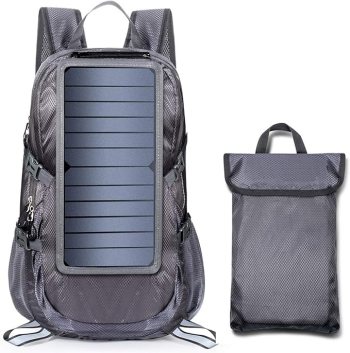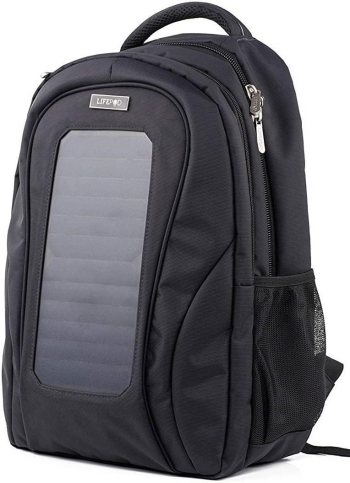The world of solar-powered gear has given rise to innovative products like solar backpacks, which combine functionality with sustainability. Two notable examples are the ECEEN Solar Backpack and the LifePod Solar Backpack. In this comparison, we'll delve into the features, benefits, and differences between these two solar backpacks.
Design and Build
The ECEEN Solar Backpack boasts a sleek and durable design, with a waterproof nylon fabric that ensures protection against the elements. It has multiple compartments, including a dedicated laptop sleeve, tablet pocket, and several smaller pockets for organizing accessories. The backpack's dimensions are 19.7 x 11.8 x 7.9 inches, making it suitable for daily commutes or short trips.
In contrast, the LifePod Solar Backpack has a more rugged design, with a focus on outdoor enthusiasts. Its waterproof and tear-resistant material can withstand harsh conditions, and its multiple compartments provide ample storage for gear, including a hydration bladder sleeve. The LifePod's dimensions are slightly larger, at 20 x 12 x 8 inches, making it ideal for longer excursions or backpacking trips.
Solar Panel Performance
Both solar backpacks feature integrated solar panels that allow users to charge their devices on-the-go. The ECEEN Solar Backpack has a 7W solar panel with an efficiency rate of 22%, capable of charging a smartphone in approximately 4-6 hours. The solar panel is also removable, allowing for easier cleaning and maintenance.
The LifePod Solar Backpack, on the other hand, boasts a more powerful 10W solar panel with an efficiency rate of 25%. This enables faster charging times, with a smartphone reaching full capacity in around 3-5 hours. Additionally, the LifePod's solar panel is adjustable, allowing users to optimize its position for maximum energy absorption.
Battery and Charging Capabilities
The ECEEN Solar Backpack has a built-in 10,000mAh battery pack that can store excess energy generated by the solar panel. This allows users to charge their devices even when the sun isn't shining. The backpack supports USB charging, with two ports available for simultaneous device charging.
In comparison, the LifePod Solar Backpack features a larger 15,000mAh battery pack, providing more storage capacity for excess energy. It also supports USB-C Power Delivery (PD) charging, enabling faster and more efficient charging of devices like laptops and tablets.
Additional Features
Both solar backpacks offer additional features that enhance their functionality. The ECEEN Solar Backpack has reflective strips for increased visibility at night, as well as a built-in rain cover to protect against unexpected downpours.
The LifePod Solar Backpack, meanwhile, includes a built-in flashlight with red light mode, which preserves night vision. It also features a hydration bladder sleeve and trekking pole attachments, making it an excellent choice for outdoor enthusiasts.
Conclusion
When comparing the ECEEN Solar Backpack and the LifePod Solar Backpack, it's clear that both products cater to different needs and preferences. The ECEEN is ideal for daily commutes or short trips, with a focus on durability and practicality. The LifePod, on the other hand, is designed for outdoor enthusiasts, offering more advanced features like adjustable solar panels and USB-C PD charging.
Ultimately, the choice between these two solar backpacks depends on your specific requirements and usage scenarios. If you're in the market for a reliable and feature-rich solar backpack, either of these options would be an excellent choice. As the demand for sustainable and portable power solutions continues to grow, solar backpacks like the ECEEN and LifePod are poised to play an increasingly important role in our daily lives.































